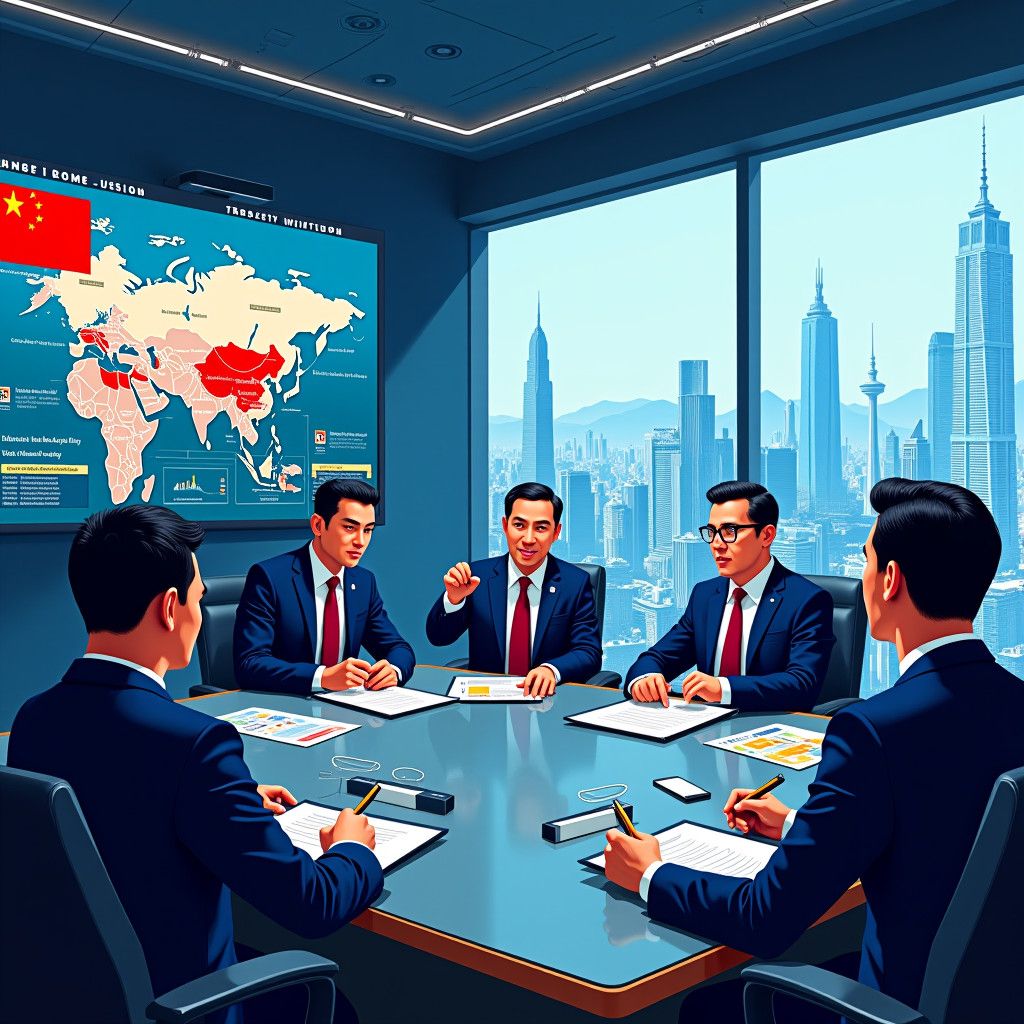In recent months, tensions between the United States and China have escalated, particularly regarding semiconductor technology and supply chains. The U.S. government has introduced tighter restrictions on the export of chip technology to China, aiming to curb the country’s advancements in critical sectors like artificial intelligence and military applications. These measures have not gone unnoticed in Beijing, which has vowed to respond assertively to what it perceives as an aggressive economic maneuver.
The semiconductor industry is a keystone of modern economies, powering everything from smartphones to advanced weaponry. As global demand for chips skyrockets, the race to dominate this sector has intensified. In this context, the U.S. policy of restricting exports of semiconductor technologies to China could potentially backfire, not only affecting Sino-American relations but also impacting global supply chains and technological innovation.
Understanding China’s Position
Since the initial wave of U.S. restrictions began in 2018, China has been vocal about its determination to become self-sufficient in semiconductor production. The Chinese government has implemented various strategies, including significant investments in domestic chip manufacturing and research and development initiatives. In 2020, for instance, China allocated approximately $29 billion to support its semiconductor sector, highlighting its commitment to reducing dependency on foreign technology.
In response to the latest restrictions, Chinese officials have hinted at “countermeasures” that could target U.S. companies and interests within China. These measures may involve increasing scrutiny of American companies operating in China or creating regulatory hurdles that could impede their business operations. Such actions could create a chilling effect on investments and deepen the rift between the two nations.
The Economic Fallout
The ramifications of ongoing U.S.-China tensions stretch far beyond bilateral relations. The semiconductor supply chain is intricate and globally interconnected. Analysts warn that further escalation could disrupt supply chains, leading to increased costs and longer lead times for semiconductor products. Companies like Apple and Intel, which depend on a stable supply of chips, may face operational challenges if the situation deteriorates.
Moreover, the U.S. approach could encourage other countries to reconsider their trade alliances. European countries, for example, may begin to rethink their positions if they perceive potential threats to their access to semiconductor technology. The risk of a fragmented global supply chain looms large, potentially leading to a scenario where nations gravitate toward either U.S. or Chinese technology ecosystems, thereby increasing geopolitical frictions.
Future Prospects and Strategic Shifts
The semiconductor landscape may witness significant shifts as both countries recalibrate their strategies. China is expected to persistently enhance its domestic capabilities, and investments in AI and quantum computing may accelerate without U.S. technology. On the other hand, the U.S. might explore new partnerships with allies to create a more robust semiconductor manufacturing base in nations such as Taiwan, South Korea, and Japan.
Additionally, the rise of non-traditional players in the semiconductor industry could emerge as a wild card. Nations such as Vietnam and India have shown interest in developing their semiconductor capabilities, potentially altering the competitive dynamics in the global market. The involvement of these emerging players could soften the impact of U.S.-China tensions on the overall industry.
Conclusion
As the U.S. continues to impose restrictions on semiconductor technology exports to China, the latter’s response will undoubtedly shape the future trajectory of the global tech landscape. The implications of these actions extend beyond mere economic competition; they represent a complex interplay of national security interests and technological supremacy. Stakeholders, from policymakers to business leaders, must remain vigilant as they navigate this charged environment.
The winner of this technological cold war will not only gain economic advantages but will also set the agenda for future innovations. Companies and nations will need to reassess their strategies to thrive in an increasingly bifurcated technological landscape shaped by the decisions of both Washington and Beijing.












